Pantry Paratus:
Garden Tour 2014
We are on a family vacation deep in the Rocky Mountains, and I am often struck at the gardening contrasts found within our beautiful country. Ohio’s peonies are replaced with Georgia’s Gardenias; Florida’s Birds of Paradise are replaced with Colorado’s “rock gardens.” We are a diverse nation. I asked our facebook and blogging friends to share their favorite garden spots with us so that we can tour the nation!
Jared, a friend who happens to run J & J Acres, shares his zinnias with us. He is a true permaculturist at heart and reminds us that permaculture means so much more than just traditional food crops. He says, “Growing flowers, like Zinnia, has multiple uses in a vegetable garden. They are, of course, beautiful to look at, but also bring in a lot of pollinators, like butterflies. Best of all, you can even clip a few to bring inside your home as well!”
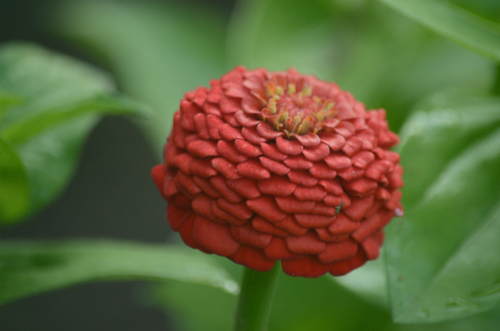
And just as Jared hopes to educate others to positive food production, so does Christina, who works with the younger set. I’d like to do the garden tour if that’s okay. Christina in Oklahoma is teaching her daycare kids to grow their own food with her opus, “Little Sprouts Learning.”
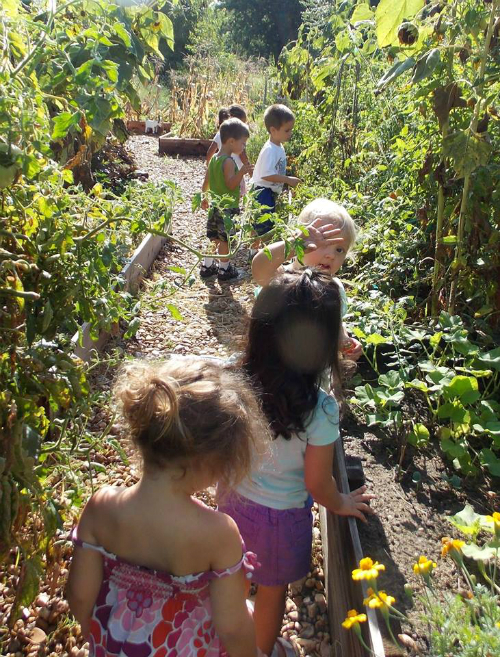
I recently found some great advice on Green Talk about how to get rid of unwanted garden visitors, and began admiring her beautiful squash, which did its part in converting her to square foot gardening–you will have to check out Anna’s blog to see all of her great pictures and advice. I was, however, wondering why I have never tried to grow daikon radishes when I saw this picture! It’s gotta go on my garden list for next year!
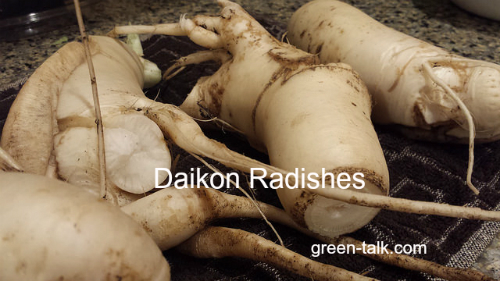
Halfway Oak Farm tried a new method of gardening this year – raised beds. It was such a success, they have enough harvest to fill their pantry through the winter. Next year they plan to triple the number of beds.
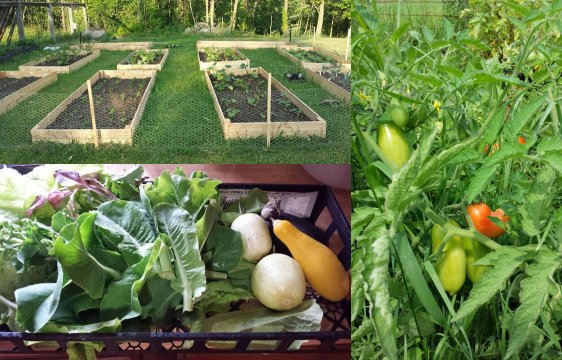
Donna and I have something in common this gardening season–our eggplant! Hers are still blooming in the Phoenix desert, whereas ours are about the size of your palm in Montana. She says, “Here in the desert, eggplant is one of the few crops that grows best in August.” Read about her gardening adventures at Sharing Life’s Abundance.
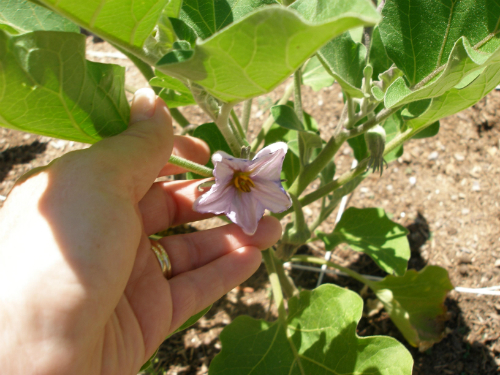
Erica from MomPrepares.com says “Plant it and they will come!” as she plugs flowers into the corners of her garden beds in hopes they’ll attract honeybees to pollenate her vegetables. And hey, they’re pretty to look at too!
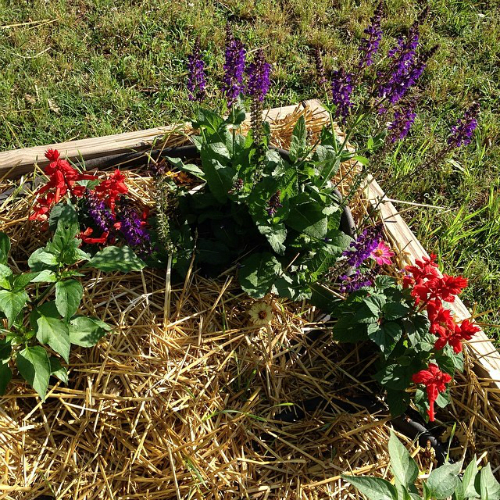
Along with Erica, Samantha is doing her part to encourage the birds & bees. Samantha at Runamuk Acres in Maine plants herbs and flowers with her vegetables as part of her companion planting strategy; and also to benefit her honeybees and local native pollinators!
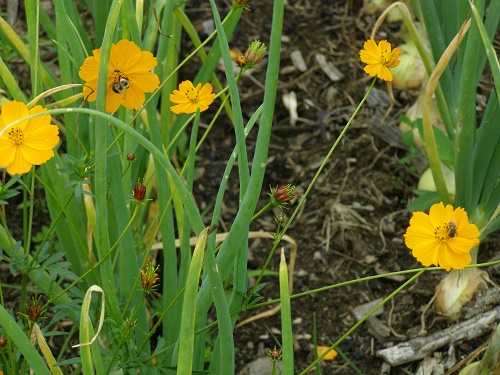
Vegetables combine with flowers and herbs in Teri’s garden to create a overspilling hodge podge of edibles and soul-nourishing ornamentals. This garden was created using the sheet mulching, or lasagna gardening technique, which she writes about here. This was her garden in early July!
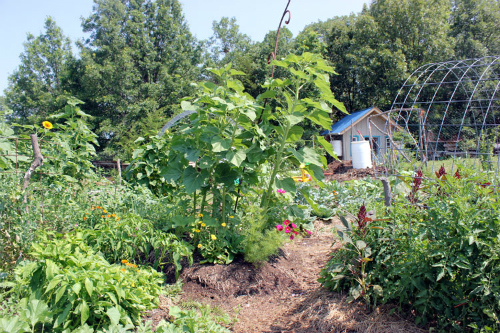
Oh, there is so much to love on this garden tour, but this next picture is the most inspiring one yet (to me personally, anyway). One Acre Farm entered their bounty of everything from vegetables to eggs to maple syrup to extracts, in their local agricultural fair, and pulled off second place in the Farm Products Display!
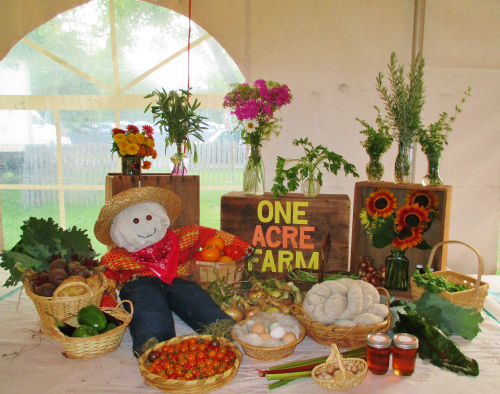
It’s always great to be reminded we can produce so much even with little space! Nicole may not have a huge garden, but she is doing everything she can to homestead right where they are to help supplement their pantry! By the way, she’s pretty convinced it’s gonna be a good year for salsa.
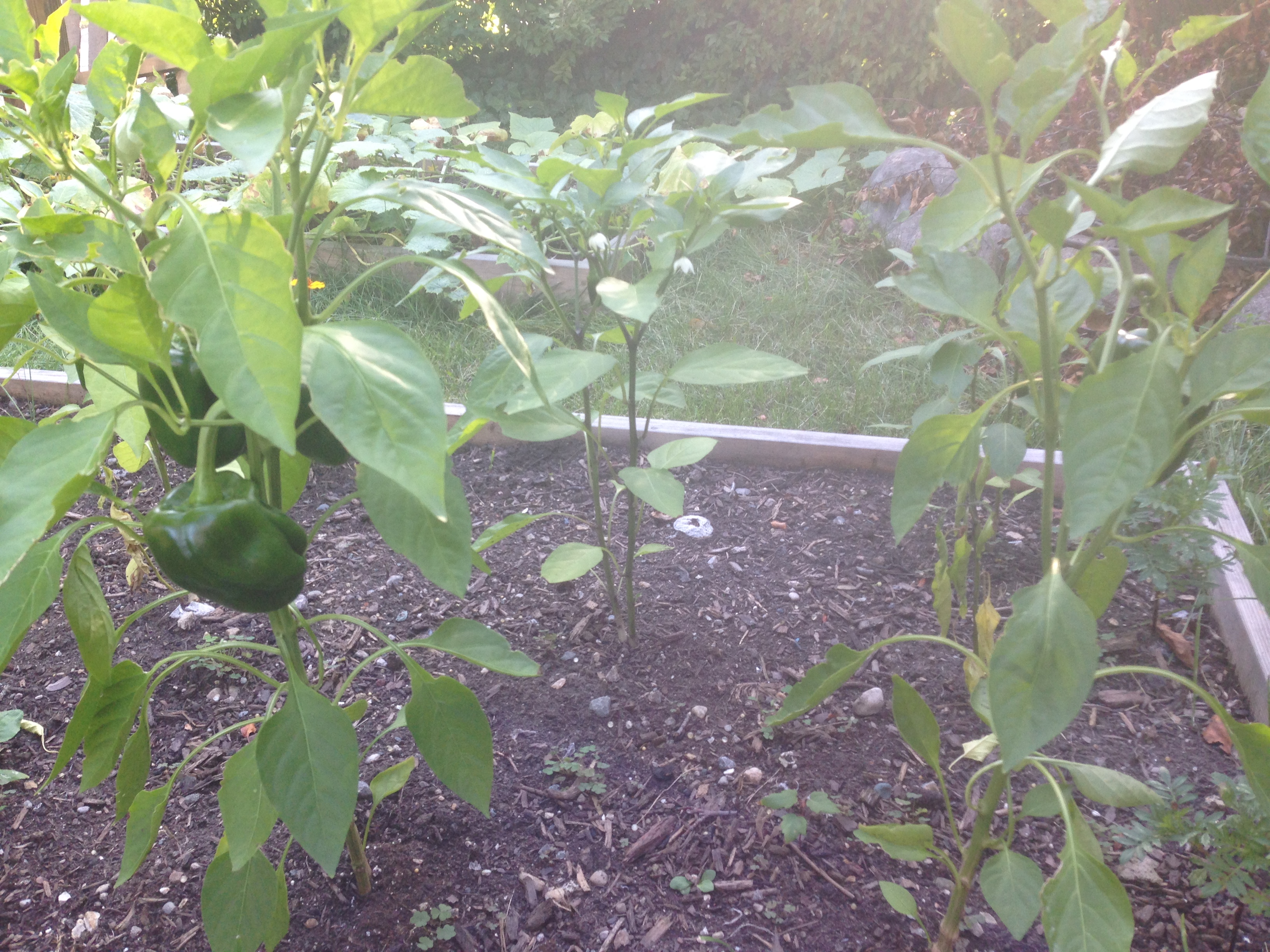
Andrea from LittleBigHarvest gardens in all the nooks and crannies she can find on her 1/6 acre. Her favorite spot is the sunny south wall of the house, where there are currently tomatoes, peppers, onions, kale, kohlrabi, ghost..jalapeno…habanero peppers, cabbage, green beans, and plenty of herbs! Check out her latest projects here.
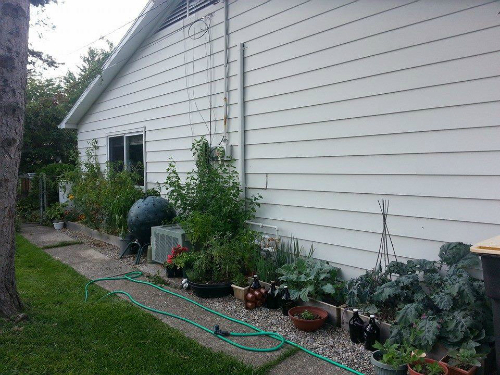
The next garden is a little closer to home for Pantry Paratus, a Montanan–Annie and her family–put in a 7,000 square foot dream garden at their new homestead and planted close to 100 tomato plants to make homemade salsa, tomato sauce, stewed tomatoes, and more! You just have to see more of what there are doing here.
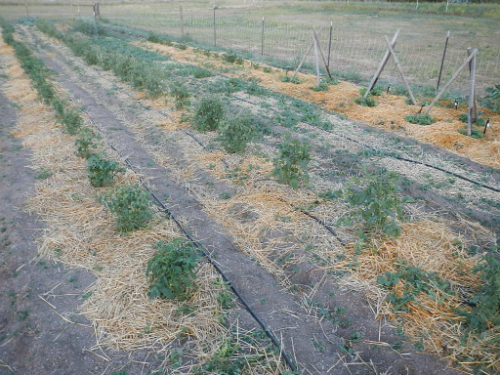
I hope that you are inspired. And for those who may be beginners, I highly recommend starting with herbs! You can get nearly immediate satisfaction and a new beginner can grow and preserve enough to enjoy their bounty throughout the upcoming year. They are practical and reap a lot of economic benefits, especially considering the outrageous price they charge for fresh herbs in the grocery store. So, to complete the tour, let’s look at 2 herb gardens.
It’s no secret that I’m an admirer of the gardens you will find at The Organic Kitchen. Look at these herbs!
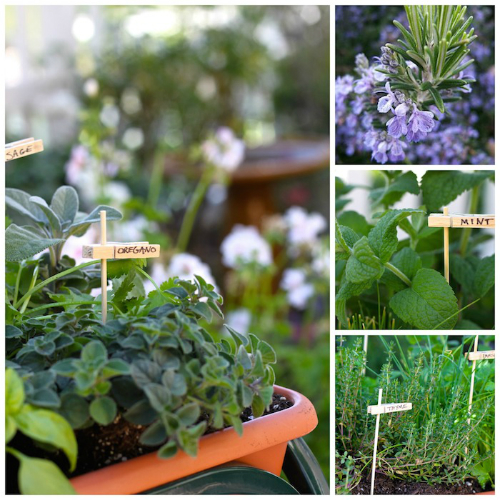
My friend Tessa from HomesteadLady.com has this to say when I asked her for a recommendation on getting started:
“If you’re looking to start an herb garden this year or augment your existing herbal patch, mint is a wonderful addition to the garden. Mint is easy to grow (although it does like to be damp-ish) and, once its established, you may discover it taking over if you’re not vigilant. The flavor of mint may just be the most widely recognizable herbal flavor in the world. From toothpaste to candy, you’ll find mint in many edible items. It also lends itself well to handmade cosmetics and to home remedies for tummy aches and sore throats. With a wide range of minty flavors (chocolate and orange being two examples), every gardener is bound to find a mint variety that appeals them.”

Let’s go grow something,
Chaya
Pantry Paratus hopes to encourage you to produce, prepare, and preserve your own harvest. Check out our full catalog of kitchen self-sufficiency supplies!
All photos were used with permission from the blog associated with each one, respectively. Please honor these hard working homesteaders by enjoying their photos without taking them.


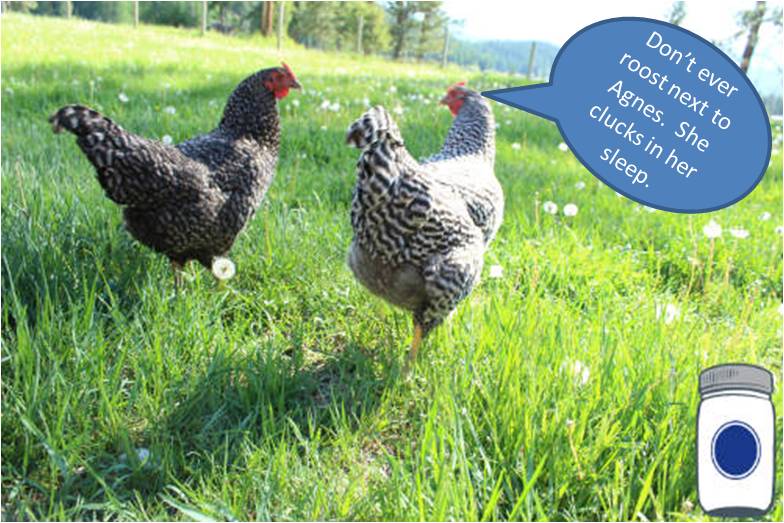

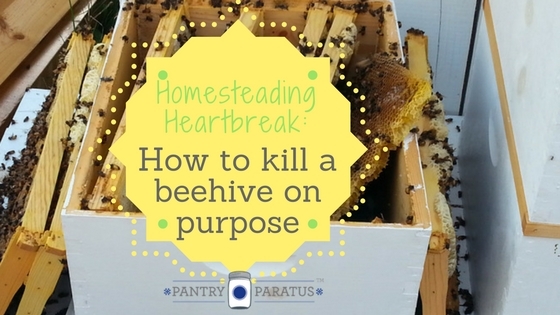

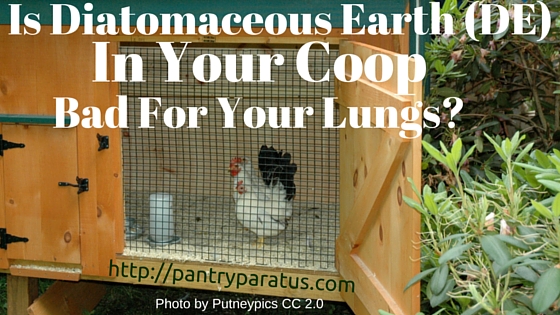



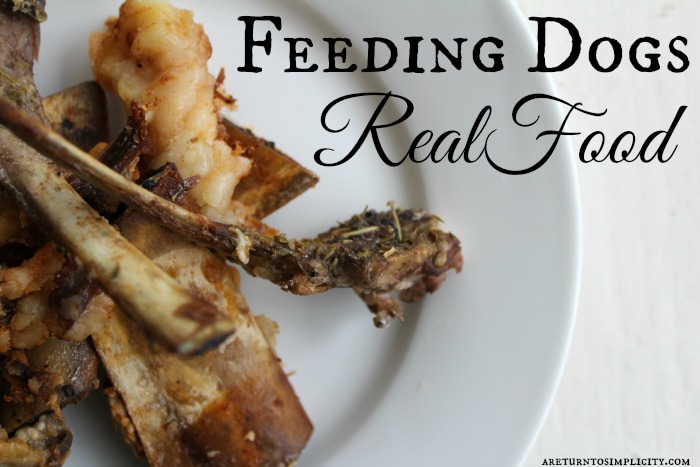
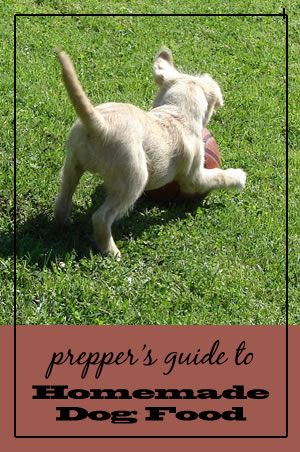
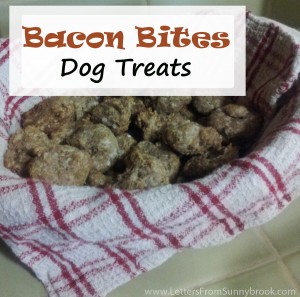
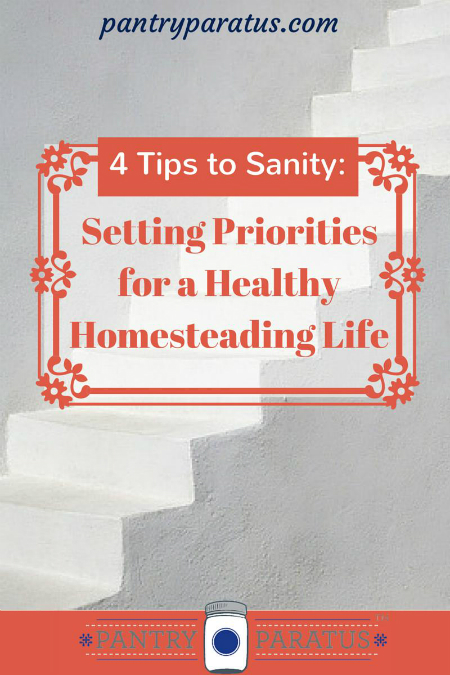
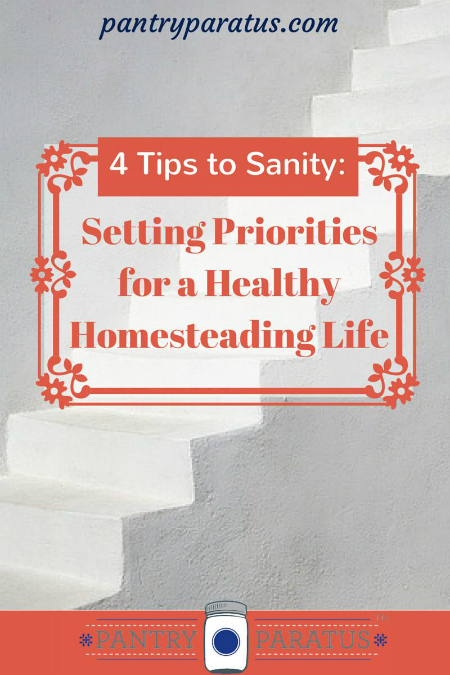

















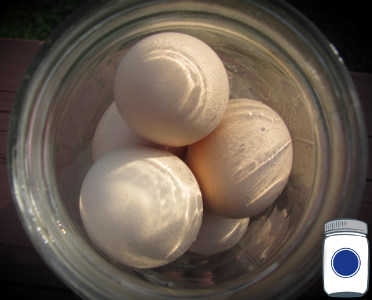



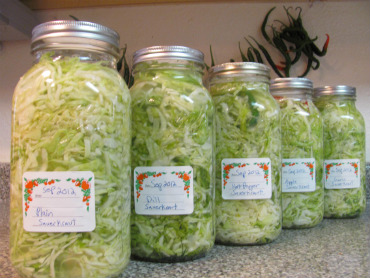

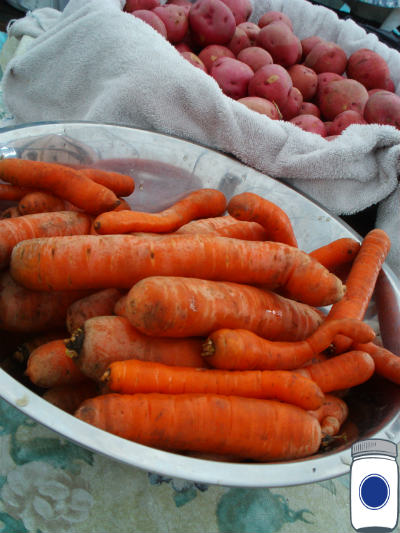
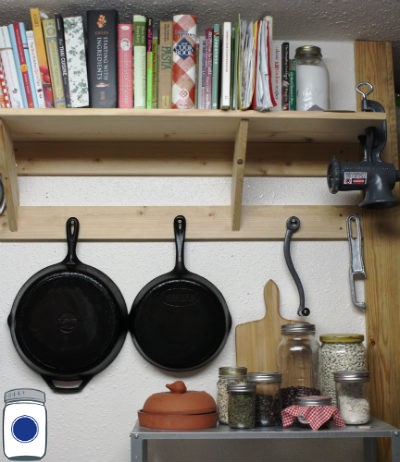
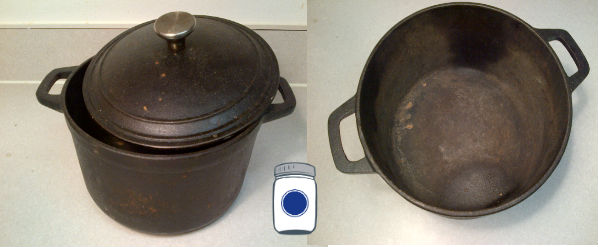
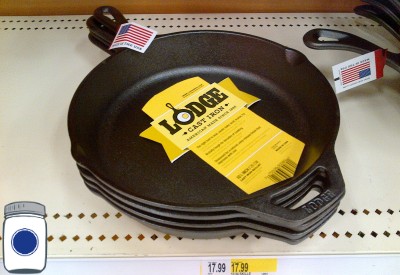
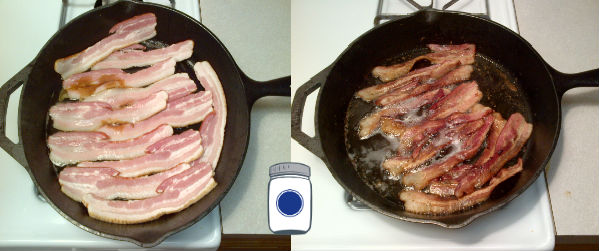
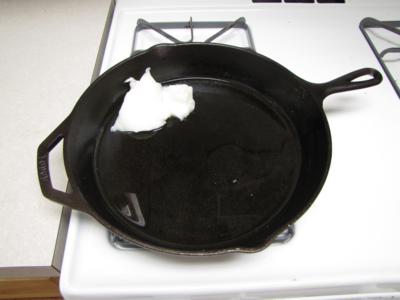
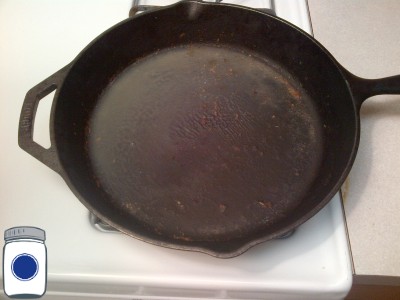
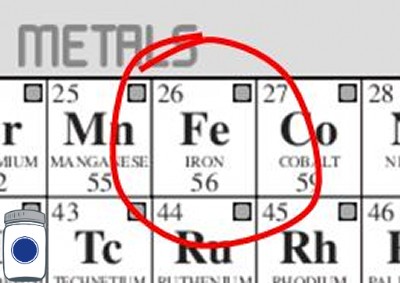
Kris
posted on Sunday, February 15, 2015 6:14:28 PM America/Denver